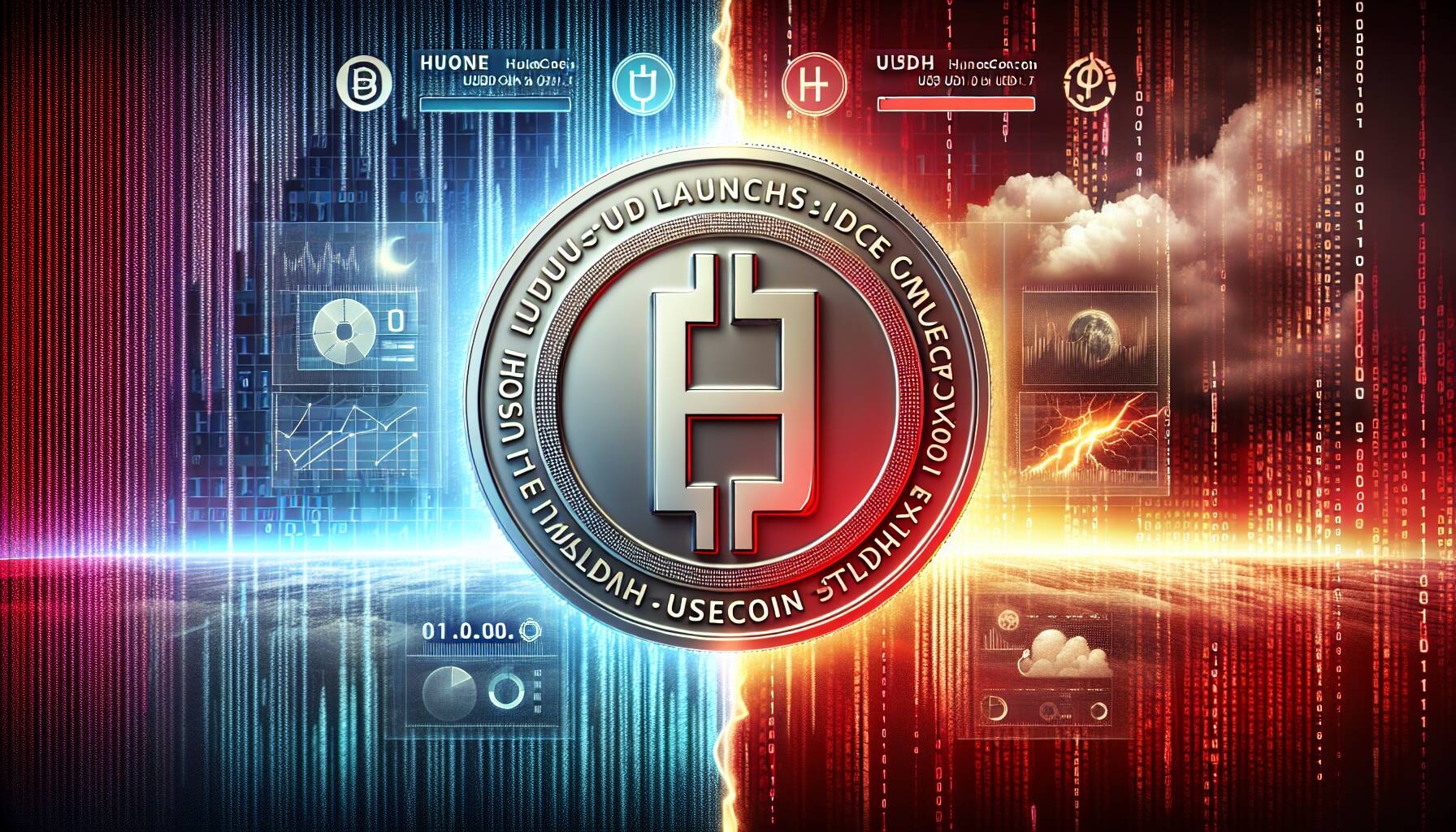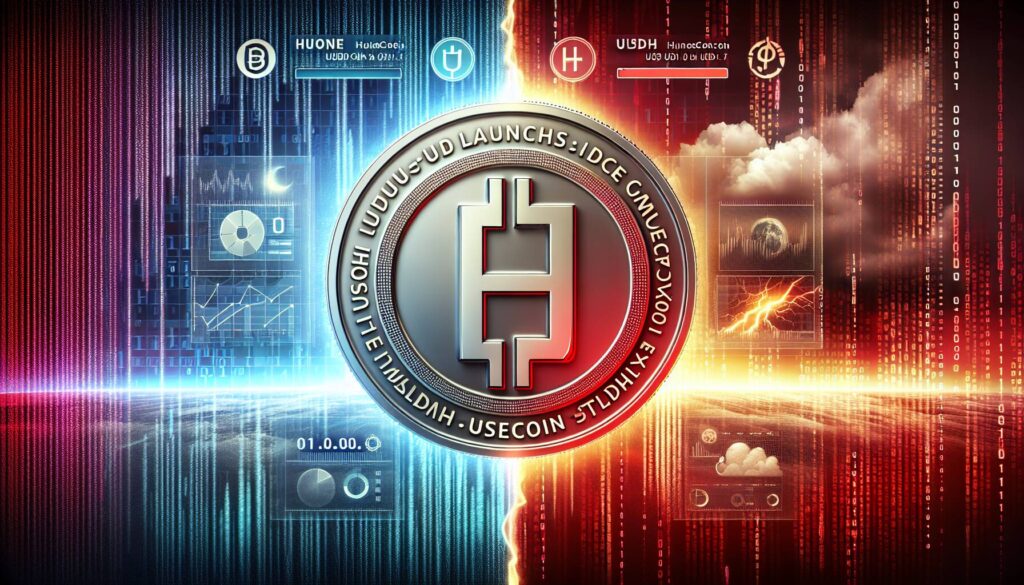In a striking development within the world of cryptocurrencies, Huione, a Telegram-based marketplace with a controversial reputation, has launched its own stablecoin known as USDH. According to a report by blockchain security firm Elliptic, this new digital currency aims to bypass the typical restrictions and freezing protocols associated with traditional cryptocurrencies. The Huione website further emphasizes that USDH operates outside the purview of standard regulatory agencies, which has raised eyebrows in an already scrutinized sector.
Before the introduction of USDH, users of Huione predominantly relied on Tether (USDT). However, this change comes in the wake of Tether freezing one of Huione Pay’s accounts in July 2024, following transactions linked to a notorious theft attributed to North Korea’s Lazarus Group. Huione’s shift to its own stablecoin appears to be a strategic move to enhance privacy and operational freedom in a space fraught with regulatory challenges.
The marketplace itself has a troubling history, having facilitated an estimated billion in transactions, including sizeable portions of funds used in notorious scams like pig butchering. Elliptic’s research uncovered a vast network of vendors offering various illicit services such as money laundering, stolen personal data, and technology to support online fraud. Alarmingly, the marketplace even sells electric shackles, purportedly for human trafficking victims, underscoring the severe ethical implications of its operations.
“Thousands of vendors are offering money laundering services, stolen personal data, technology and other items necessary to conduct online fraud on an industrial scale,” Elliptic’s findings highlight.
As part of its recent rollout, Huione has also introduced a dedicated chat service to reduce reliance on third-party applications like Telegram, further indicating its desire for autonomy within the digital landscape. Given its connections to Huione Group, a Cambodian conglomerate, and operations described as stemming from a labor camp known for cyber scams, this development raises fundamental questions about accountability and ethics in the burgeoning world of digital finance.

Huione’s Illicit Marketplace: The Emergence of USDH Stablecoin
The emergence of Huione and its newly launched stablecoin, USDH, marks a significant development in the world of illicit online marketplaces. Here are some key points regarding the implications and impacts on readers’ lives:
- Launch of USDH Stablecoin:
- USDH was designed to bypass traditional regulatory measures affecting digital currencies.
- It directly responds to incidents like Tether freezing Huione Pay’s account linked to criminal activities.
- Shift from Tether to USDH:
- Prior reliance on Tether (USDT) and its legal restrictions highlights the challenges for users in illicit spaces.
- USDH may encourage more users to participate in illegal transactions without the threat of account freezes.
- Estimated Transactions:
- Huione has allegedly facilitated billion in transactions, signaling the scale of its operations.
- A considerable portion of these funds is linked to large-scale scams, such as pig butchering.
- Enhanced Service Offerings:
- Huione has expanded its services by releasing a proprietary chat platform, reducing reliance on Telegram.
- This move can improve security and privacy for its users, reflecting the trends in illicit communications.
- Market Research Insights:
- Thousands of vendors are reportedly engaged in money laundering and online fraud on an industrial scale.
- Items such as stolen personal data and technology for fraud are being actively traded.
- Human Trafficking Connections:
- Reports suggest that the marketplace has links to human trafficking, specifically with products intended for use on victims.
- This presents a grave social issue that impacts the broader community and raises ethical concerns.
The rise of Huione and its stablecoin reflects growing trends in digital crime and the necessity for awareness about illicit operations online.
Huione’s New Stablecoin: A Game-Changer or a Legal Minefield?
The emergence of Huione’s stablecoin, USDH, marks a significant pivot in the illicit marketplace landscape, particularly within the realm of cryptocurrencies. Unlike traditional digital currencies that often face scrutiny and restrictions imposed by regulatory bodies, USDH is ingeniously crafted to sidestep these hurdles. By leveraging this distinct advantage, Huione aims to attract individuals seeking unregulated avenues for money transfers and personal data transactions. However, this approach brings both competitive edges and glaring vulnerabilities.
Competitive Advantages: The most defining benefit of USDH is its potential for unrestricted transaction capabilities. With the notorious Tether (USDT) facing regulatory clampdowns, especially after being linked to suspicious transactions, Huione’s initiative could entice users who prioritize anonymity and quick access to funds. Additionally, the introduction of its own chat service reduces dependency on platforms like Telegram, creating a more secure environment for its clientele. This autonomy may heighten user confidence in conducting transactions that traditional financial systems might reject.
Competitive Disadvantages: However, Huione’s operational model does not come without risks. The very nature of creating a stablecoin rooted in illicit activities can raise red flags that could potentially attract more law enforcement scrutiny. Countries and international agencies ramp up their efforts to crack down on money laundering, which could lead to heightened exposure for Huione and its users. Moreover, its ties to a known Cambodian conglomerate and previous associations with cybercrime may further exacerbate the legal challenges it faces.
For individuals operating in this nefarious ecosystem, Huione’s innovations might be perceived as a double-edged sword. While those seeking anonymity might find value in USDH and its enhanced platforms, regular users of Huione’s services may suddenly find themselves in precarious situations should legal actions escalate against their transactions. This is particularly relevant for those involved in operations that have become increasingly scrutinized, such as the infamous pig butchering scams linked to substantial losses for victims.
Ultimately, USDH has the potential to either bolster Huione’s position in the underground marketplace or provoke an intensified crackdown from authorities, creating a precarious balancing act for its users. As Huione navigates this treacherous terrain, the implications of its stablecoin could either empower or impede both personal and collective futures within this shadowy digital economy.

















